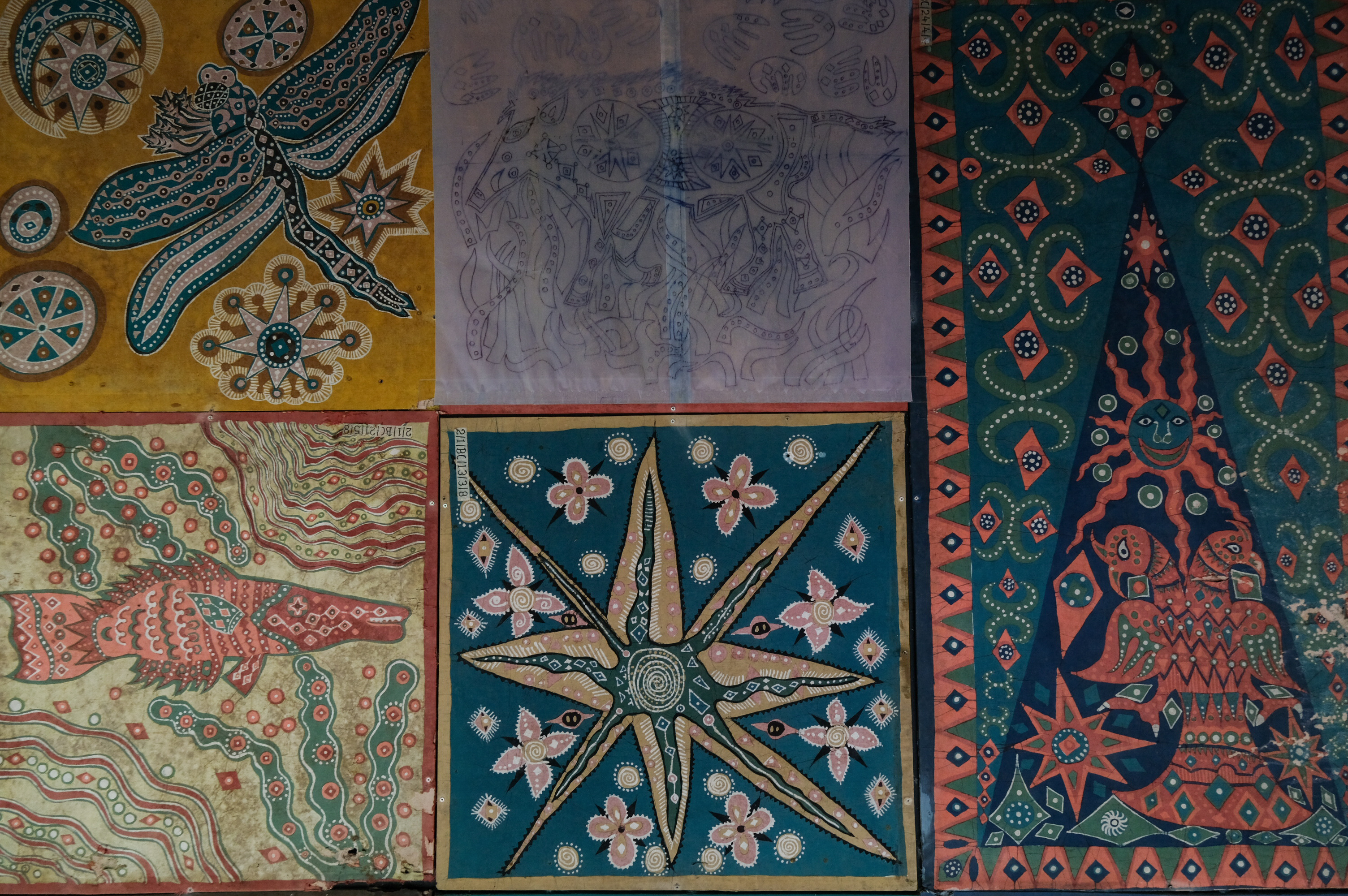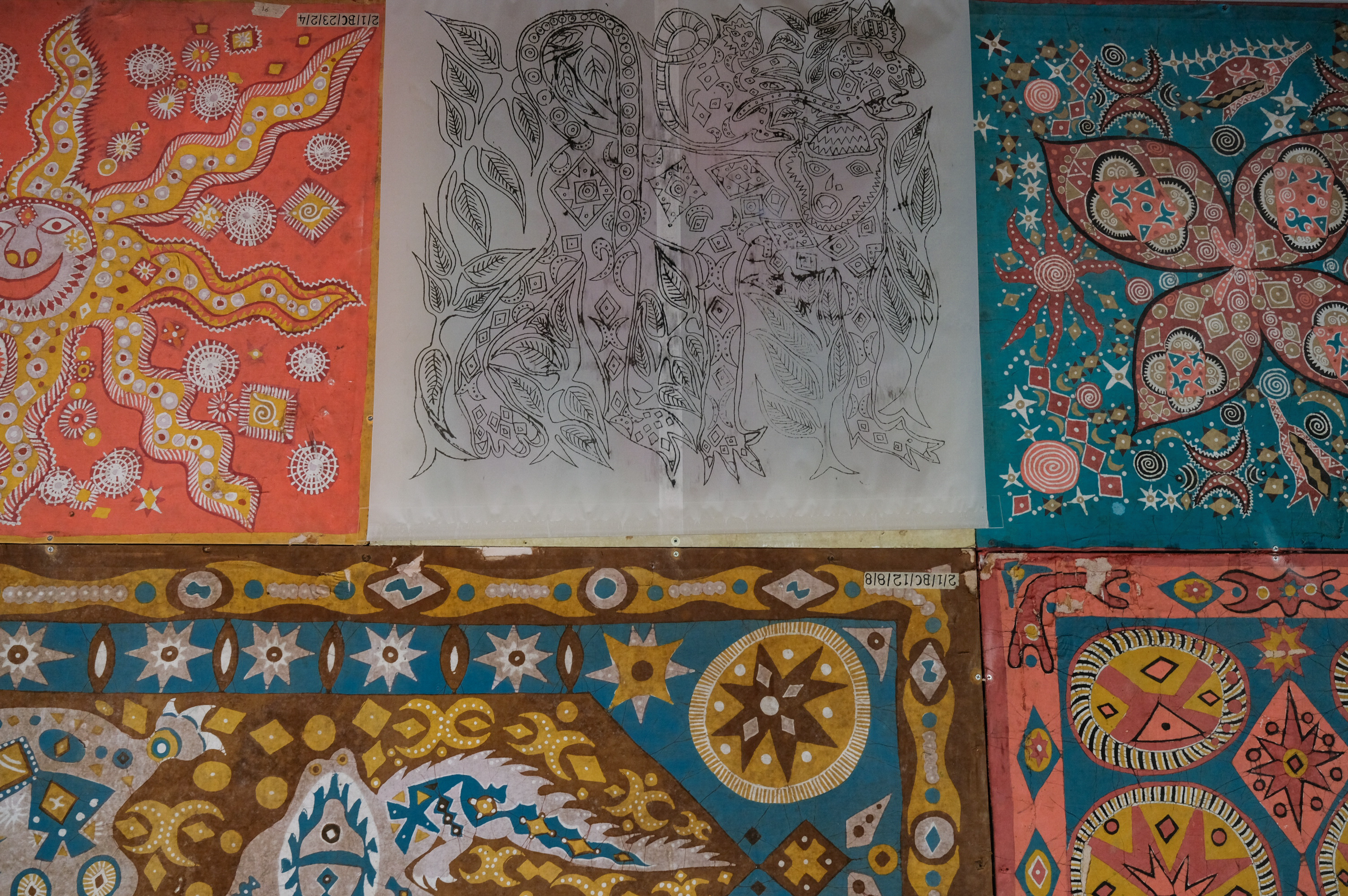Botany and Batik: The Living Archives of Ena de Silva
July–November 2024,
On view at No. 5, Lunuganga, Bentota
The celebrated batik works of Ena de Silva are the result of collaborations between a constellation of makers and are layered by Ena’s myriad interests. A deep engagement with nature was a key influence from Ena’s earliest years – she regularly made forays into Sri Lanka’s forests and wildlife parks, taking friends, family, and colleagues with her. Ena’s batiks suggest that the natural world was a perpetual source of inspiration to her, and her practice, which was deeply collaborative, celebrated these life forms. This installation explores these connections through a small selection of the multitude of books and natural objects Ena collected, and their interplay with her batik work. The works are on view at Ena’s former house, designed by Geoffrey Bawa and collaborators between 1960–1962 and relocated from Colombo in 2009 to Bentota (2013–2017) when faced with demolition. Under Ena’s occupancy the spaces of the home were regularly filled with plant cuttings, baskets of seeds, and gatherings from her excursions; particular focus is given here to Anil’s room, a space which reflected his keen scholarship of nature and creativity.
The installation is underpinned by selected verses from Alfred Lord Tennyson’s In Memoriam A.H.H. Written in 1850 following the premature death of Tennyson’s friend Arthur Hallum, the poem famously grapples with nature as an agent of random cruelty and gradual healing. The elegiac quality of the poem is echoed in Anil’s and Ena’s lives and work, which were both affected and soothed by the forces of nature in the face of illness and tragedy.
From the Garden
Encountering Ena’s library, filled with countless volumes on trees, birds, flowers, mushrooms, reptiles, and insects of Sri Lanka and the region, amongst many other topics, reveals the depth of her interest in nature. Volumes owned by her father Sir Richard Aluwihare, and her children Anil and Kusum, reveals this keen interest was infectious (and perhaps inherited) and the books are supplemented by baskets with specimens of natural objects from her garden and travels. Ena’s garden at her ancestral home in Aluwihare , Matale, was carefully crafted to create an ecosystem which she cherished – in vibrant, floral hues. The garden was catalogued on multiple occasions by Ena’s collaborators, indicating her penchant for collecting. The xerox copy from one of these books displayed here, alongside the batiks that would borrow from these drawings, using species of flora that were native to the animals depicted and often found near the studio so they could be carefully documented and drawn, suggests the accuracy imbued in crafting these batik works.

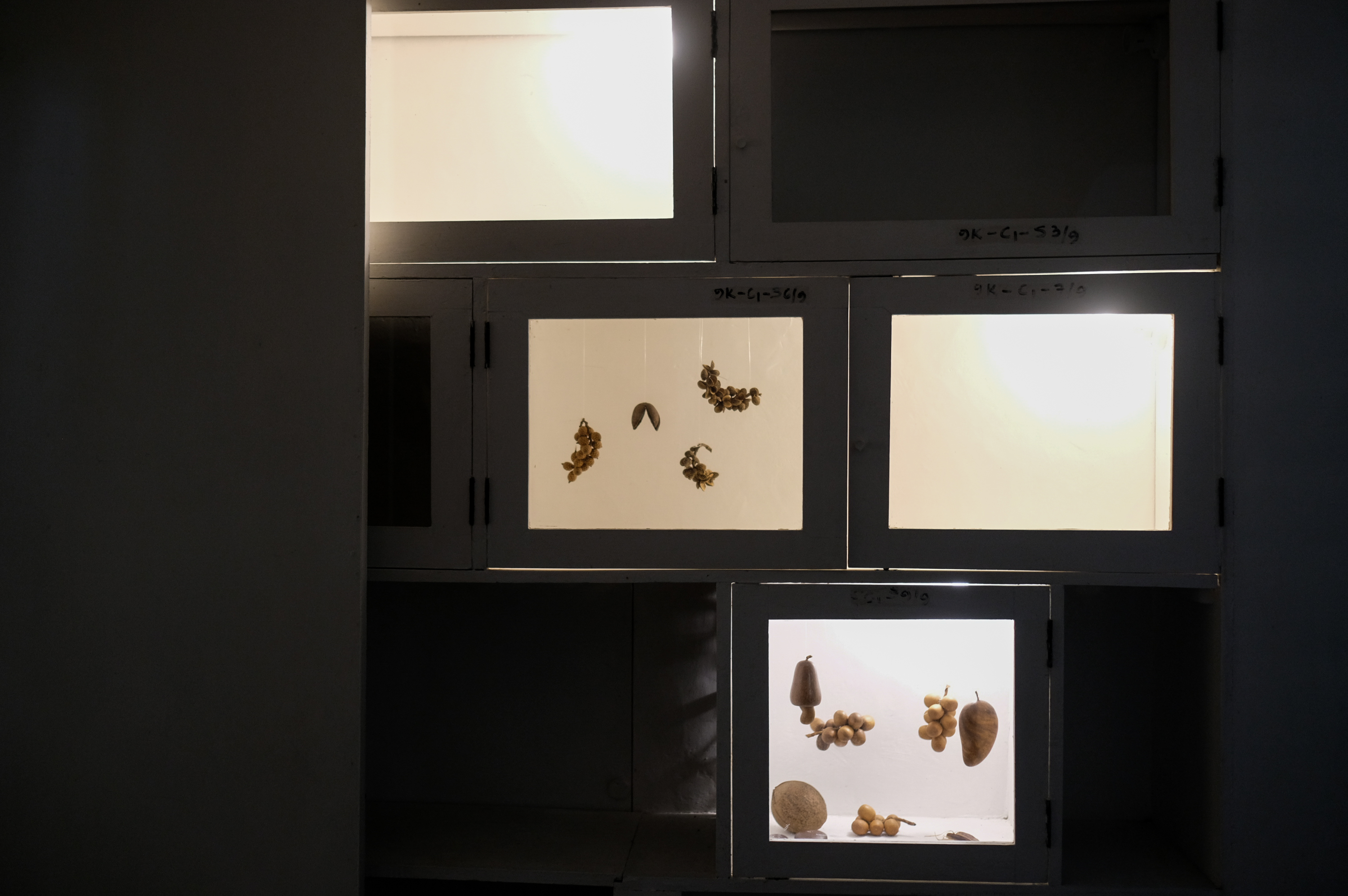
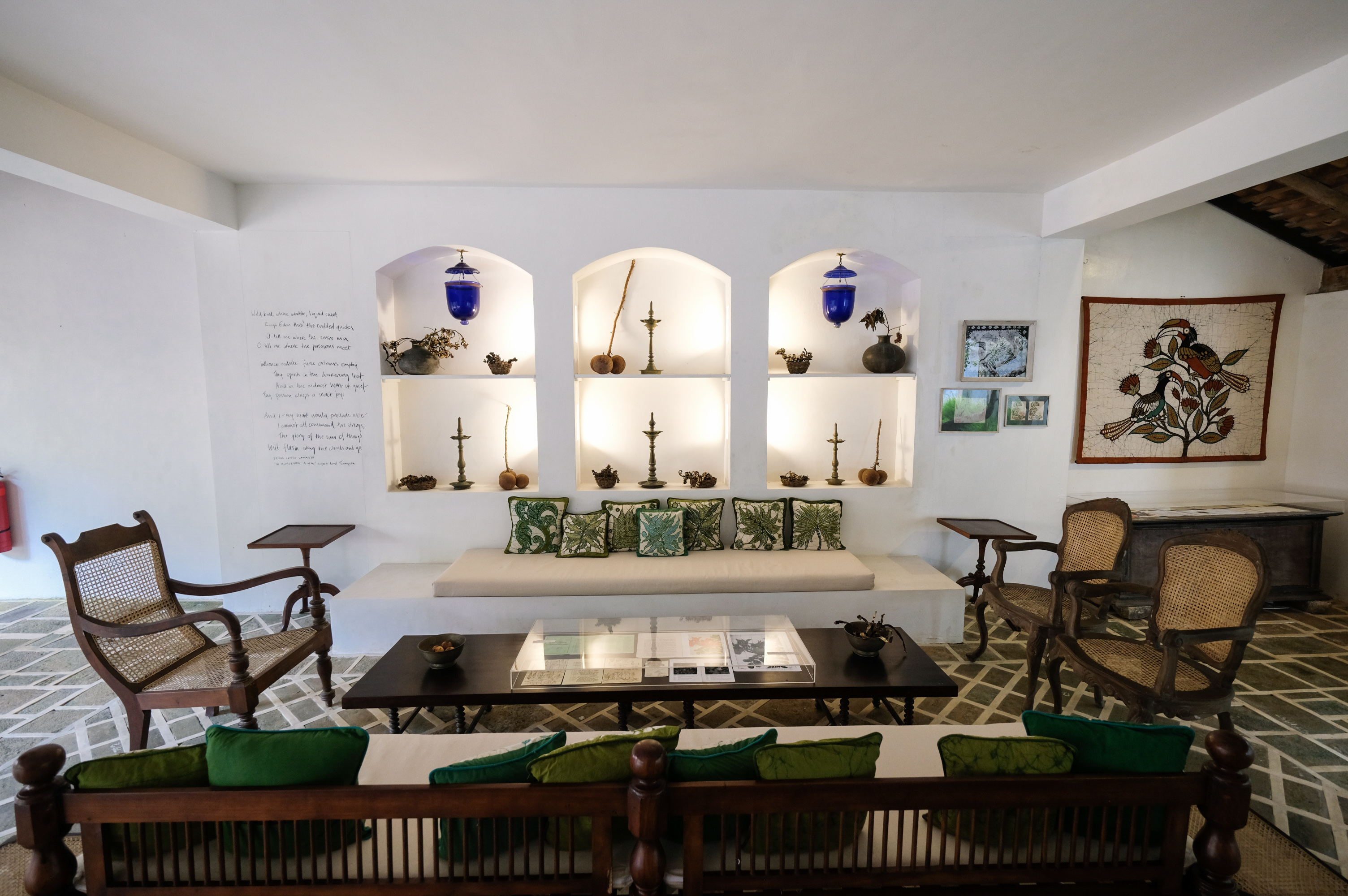
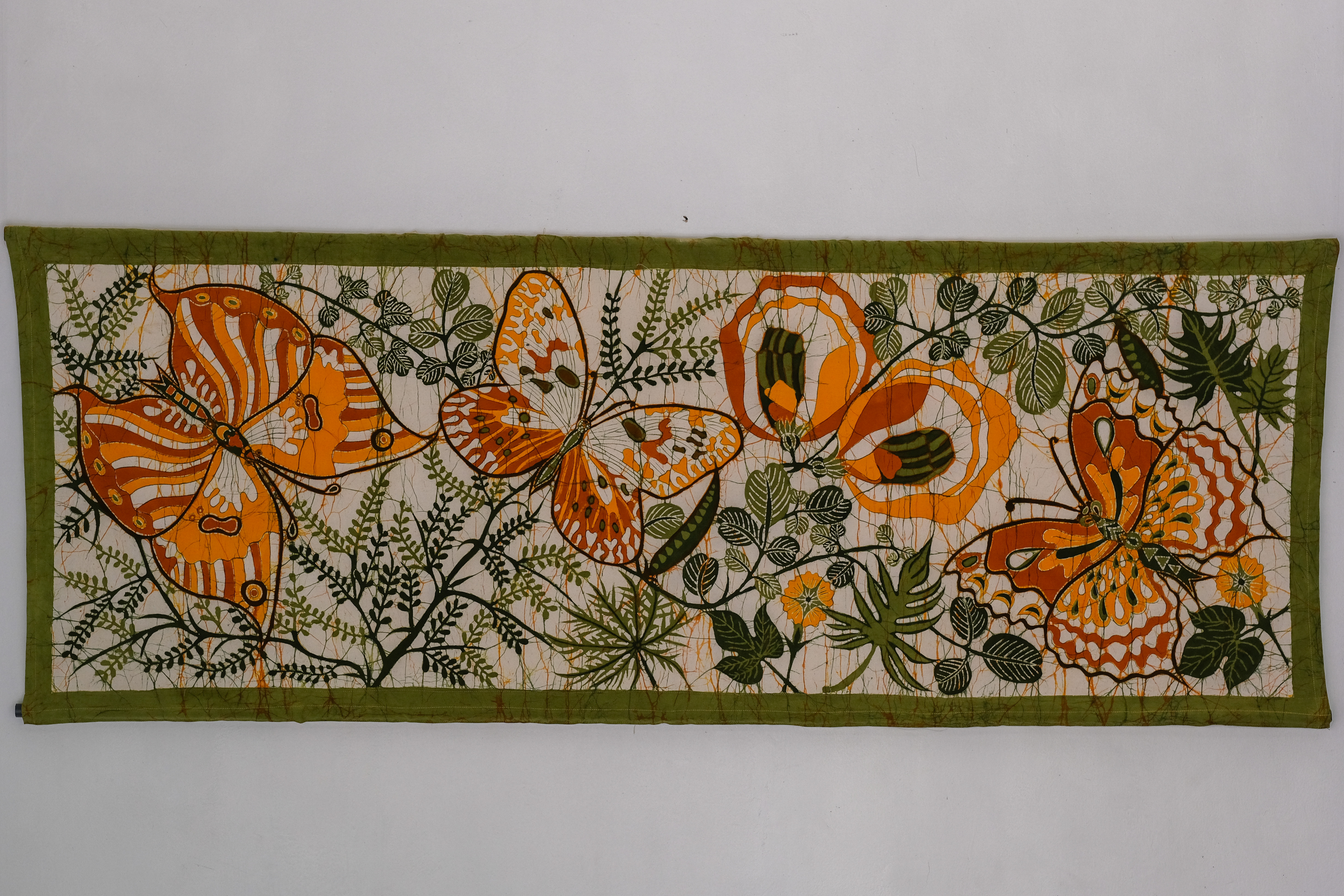
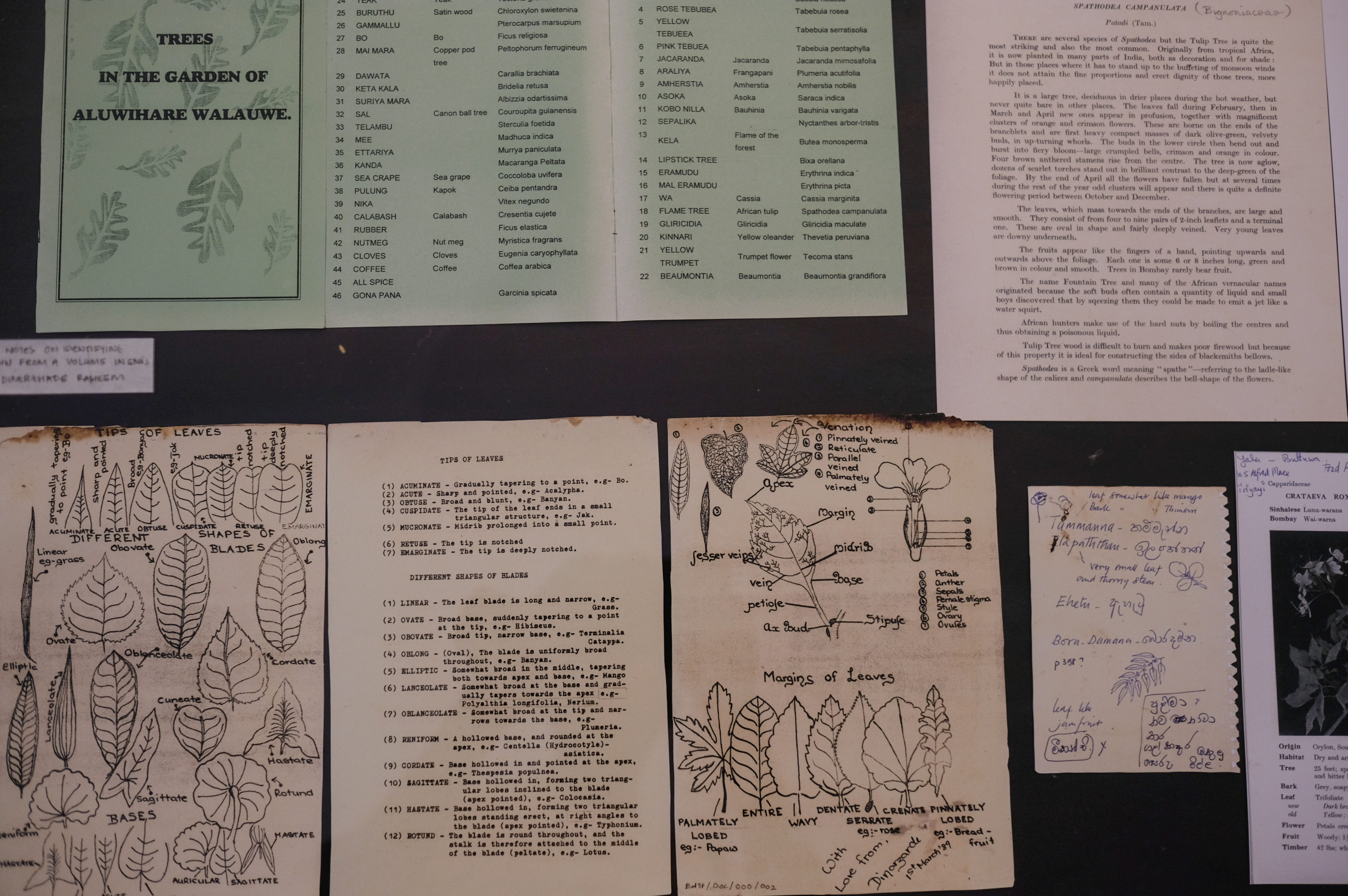

Hornbills
A multi-generational family of hornbills residing at Aluwihare, Ena’s ancestral home which she would return to in the mid ‘80s following her husband Osmund’s death in 1979, where the Aluwihare Heritage Centre Batik studio is still based, was a focal interest of Ena, Anil, and the women at the centre. Carefully observing their presence, habits, and diet, the hornbills provided inspiration for a series of drawings and batiks as well.
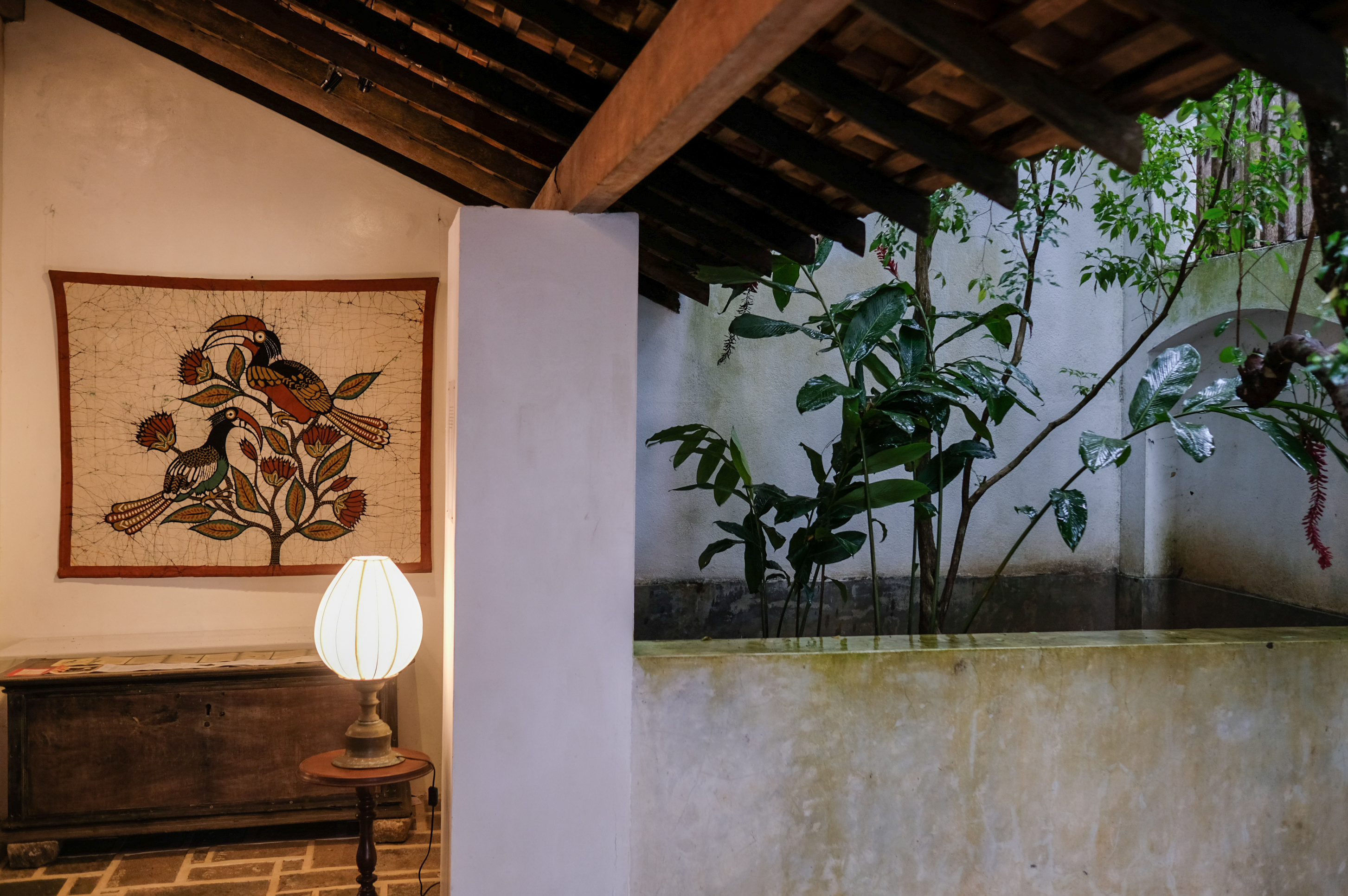
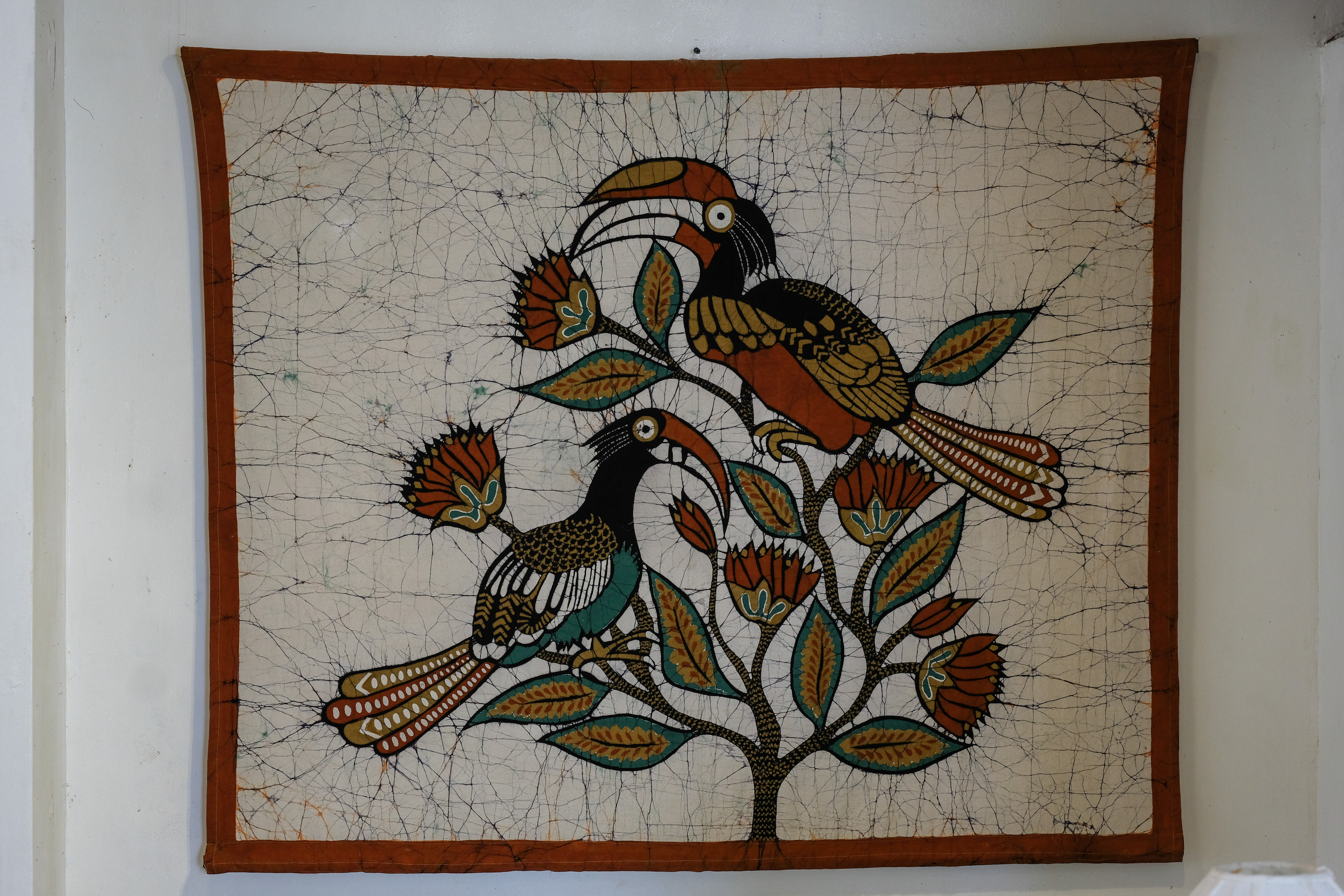
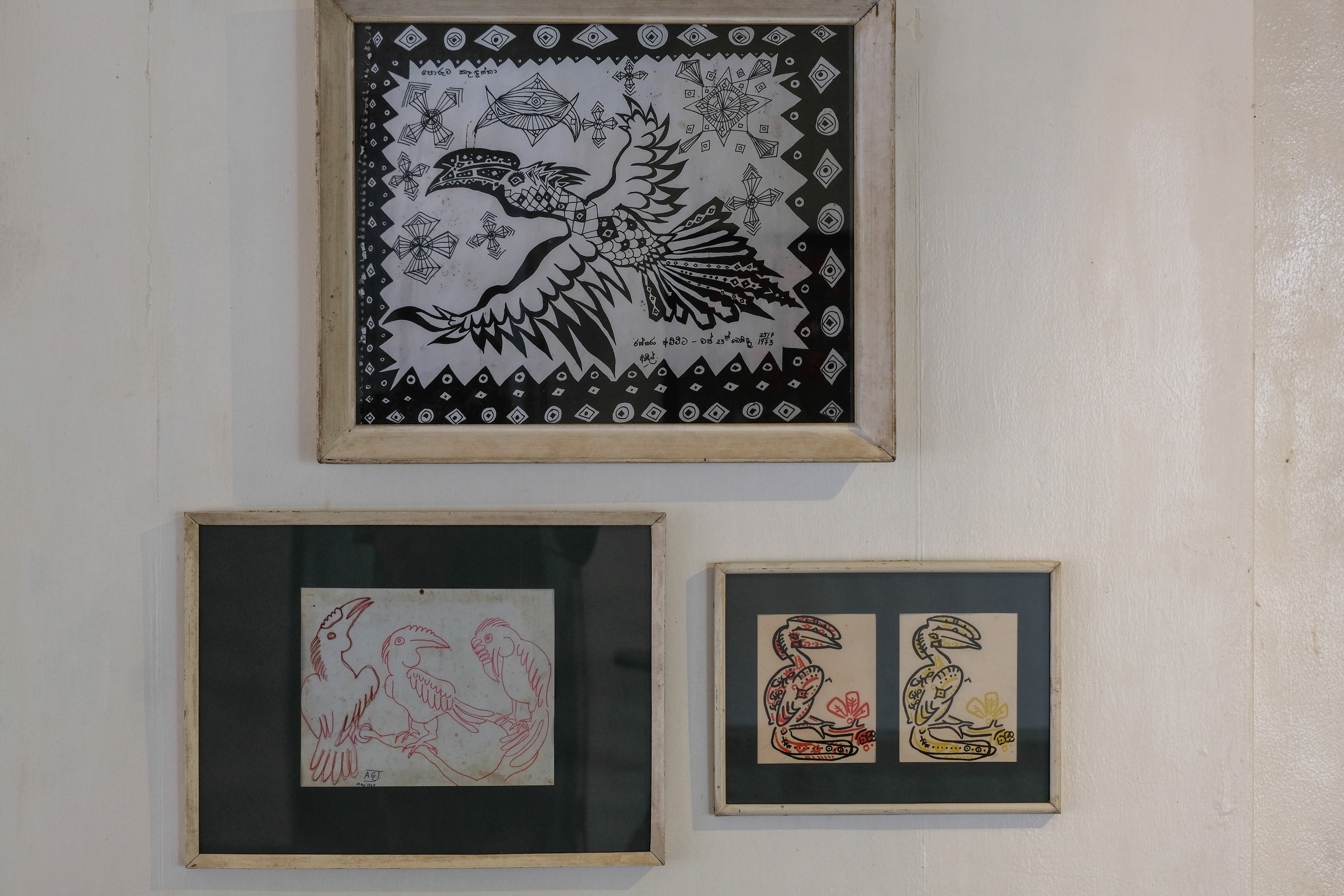

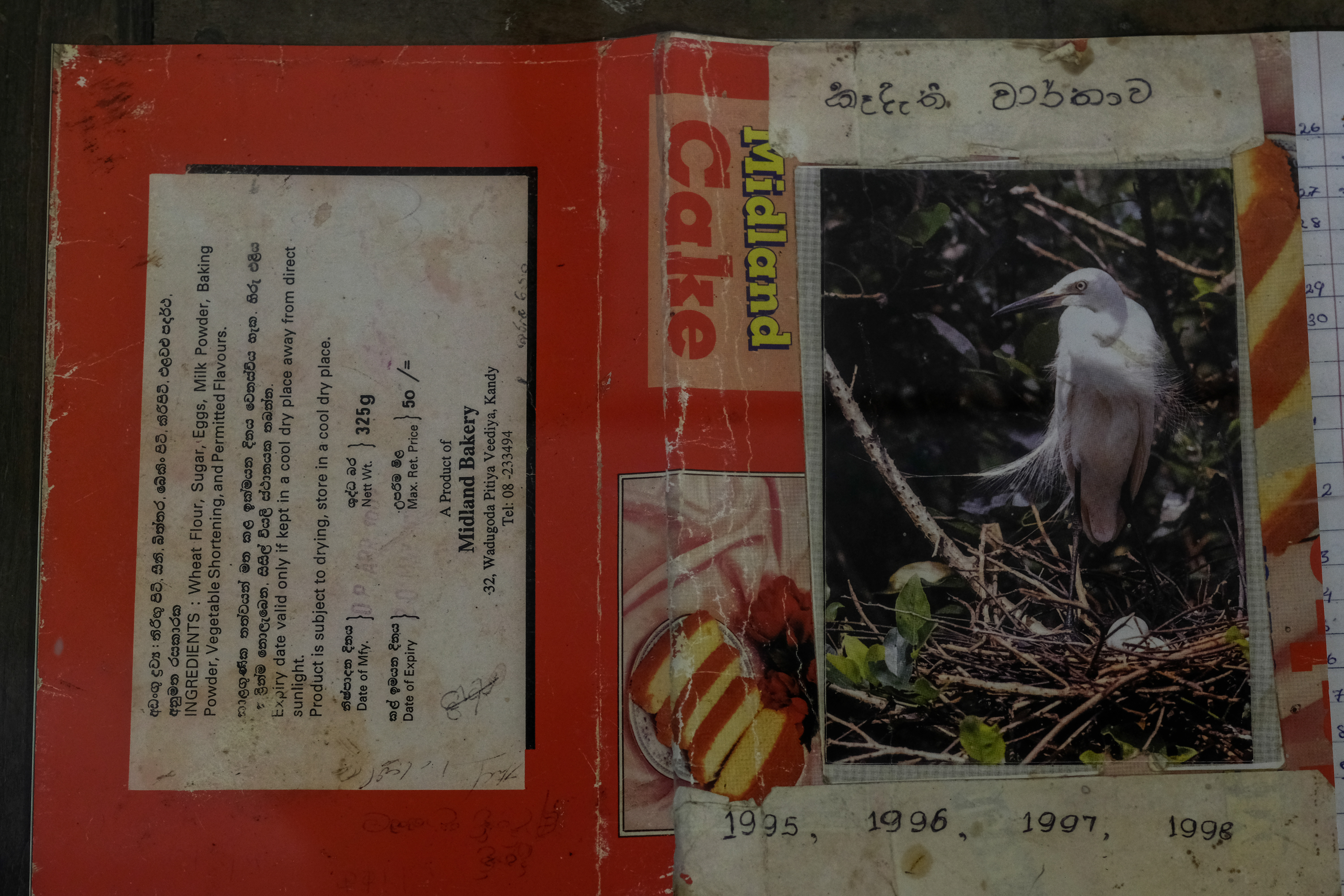

Anil’s room
As evidenced by the architecture of the house, the studio annexed to Anil’s room was a place for observation, research, and creativity. His sister Kusum described the stories he would weave around the natural objects preserved and displayed on the shelves to calm her down as a little child. His wife Averil described her first encounter of the space, while they were both studying botany at the University of Peradeniya, where a flutter of butterflies emerged from their cocoons around a branch placed in the studio. Following a setback in his health, drawing for batiks became a key means for Anil to maintain his interest in environmental conservation and he remained engaged with nature through his art.


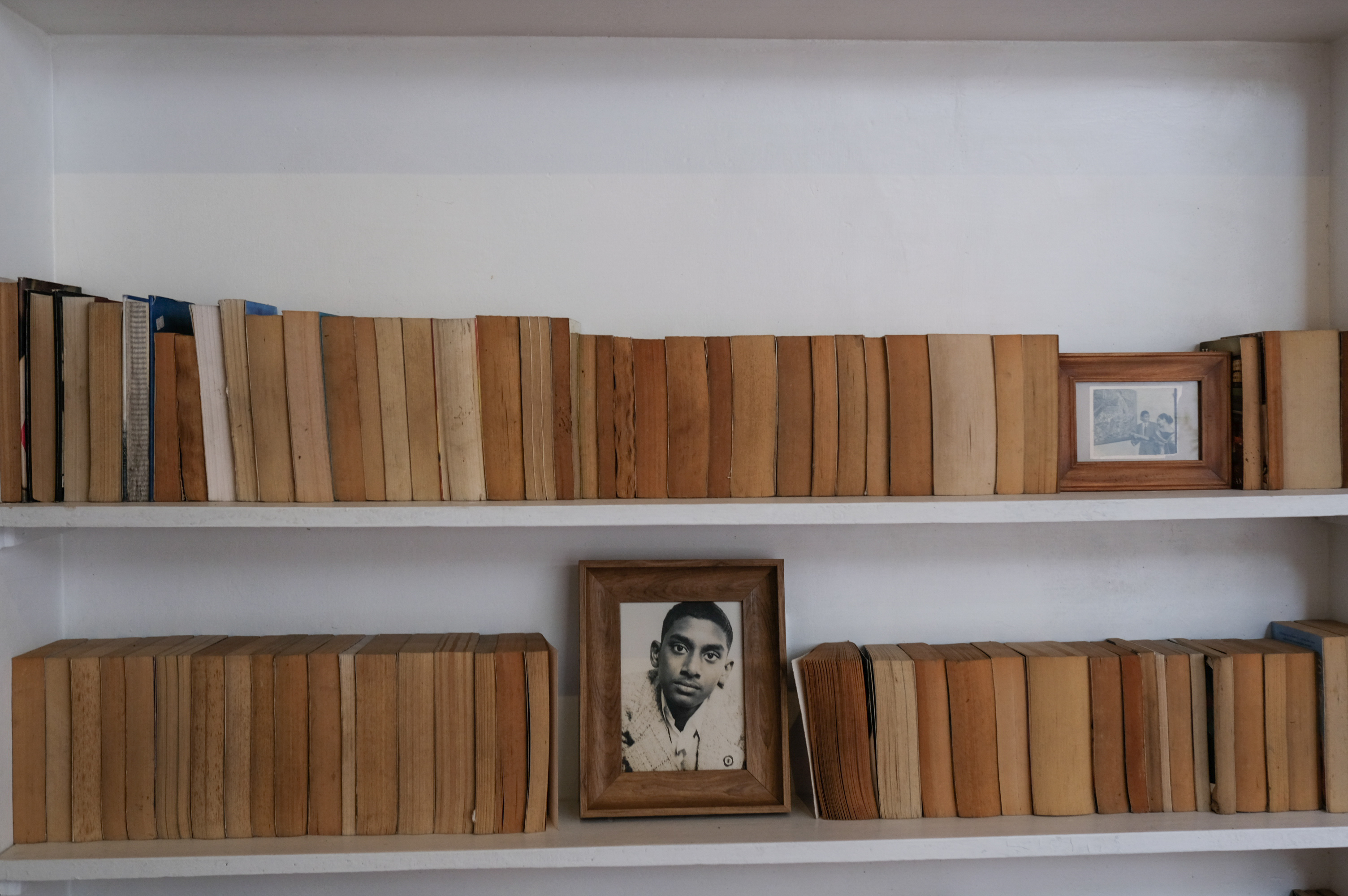
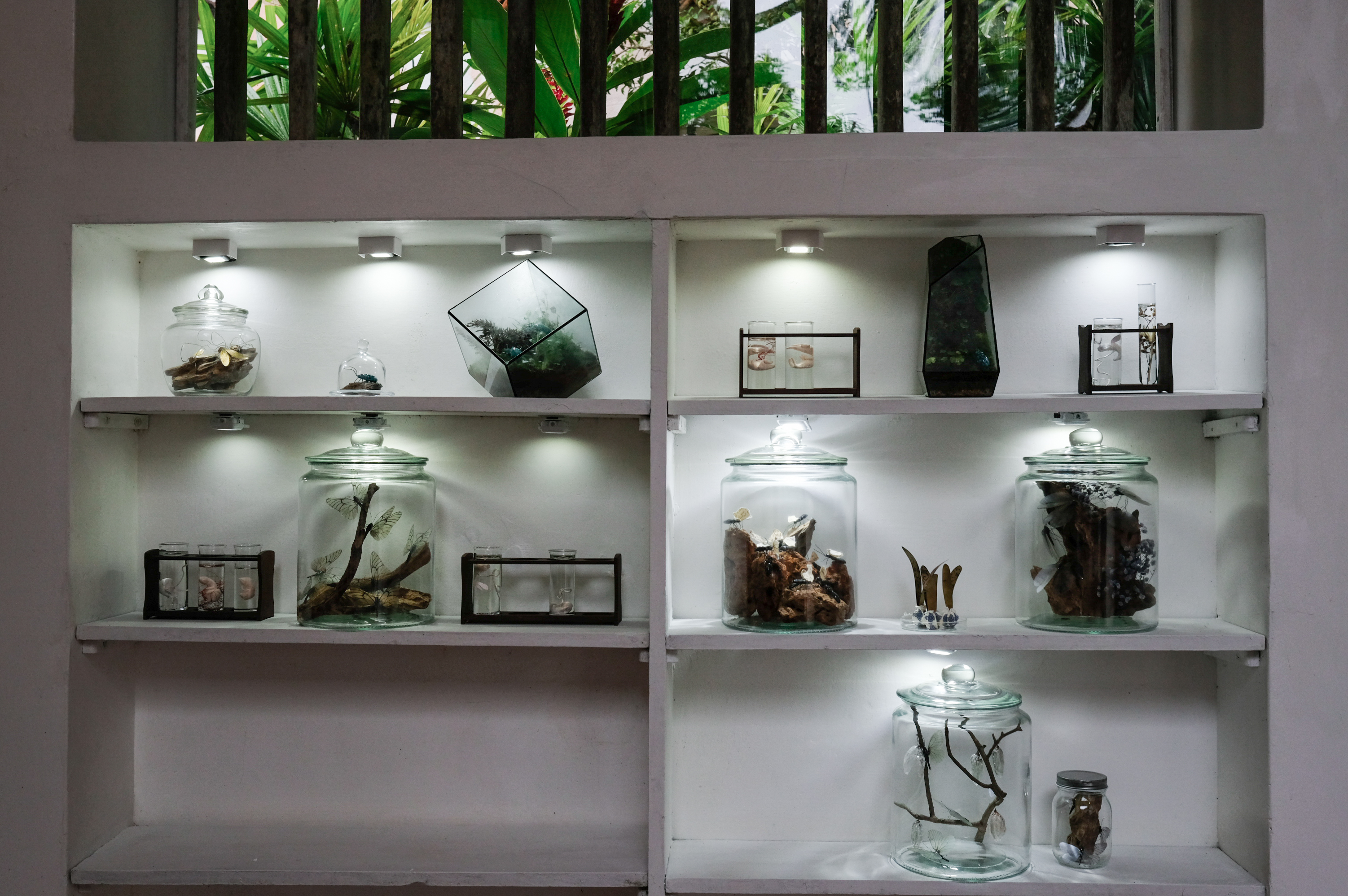
Be sure to check out Transmutations, a collection of site-specific original artwork by contemporary artist Salome Nanayakkara that responds to Anil’s identities as an artist and environmentalist.
Benota Beach Hotel Batiks
In 1969 Geoffrey Bawa’s architectural practice completed the first resort in South Asia, the acclaimed Bentota Beach Hotel. Visitors would enter through a dark stone corridor, arriving at a lobby replete with vivid batik ceiling panels describing Ena’s many interests, including flora, fauna and the zodiacs. The careful observations of nature by all those who worked in the batik practice were meticulously translated into pictorial details in the textiles.
